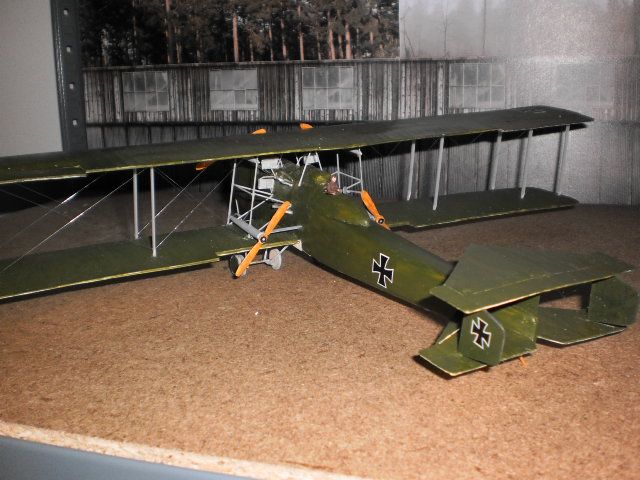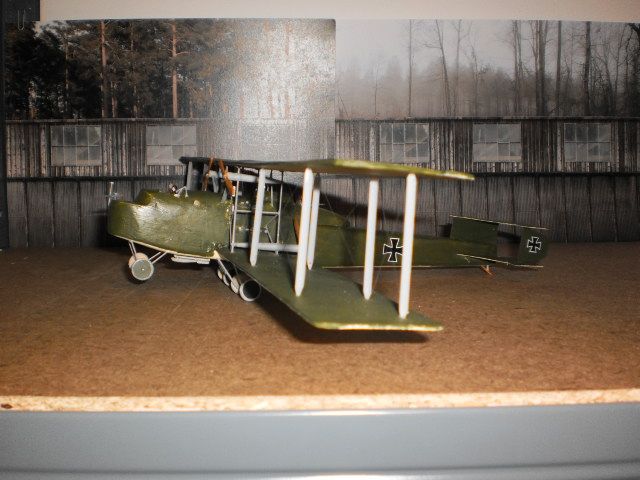Hi All,
Just finished this one which has been on and off for over three years. It came about when a thread on the ARC Forum caught my eye. The young man was attempting an SSW VIII, the largest R type of WW1. I modified his methodology for the wing construction by substituting a wood spar for metal as I lacked access to metal working facilities. The fuselage is comprised of a balsa core and thin plastic card cladding which was stuck with superglue with filler smoothing out the joins and is a duplication of the SSW method. Plans were not readily available and I had to convert diagrams to 1/72. On several occasions I found my mathematical skills less capable than required but in the end, although imperfect, the finished product looks like a DFW Giant when viewed from a respectable distance. Now for a refresher course.
The German R types were large multi engine aircraft capable of flying for several hours with a large bomb load. In general, two designs were followed. One had the engines positioned in nacelles between the wings while the other had the engines within the fuselage and used gear boxes and drive shafts to transmit the power to the propellers which were between the wings. The most successful R types were designed by Zeppelin Staaken. Twenty six were used operationally and most had the engines between the wings although there were some interesting variations too. Ultimately between the wings proved more successful but aircraft with internal engines were built by AEG, Siemens Schukert, Link Hoffman and DFW and several served operationally on the Eastern Front and in a training role. At the time these aircraft were cutting edge technology and many technical issues had to be resolved. Specialist units were set up in the East to develop aircraft suitable for long range bombing, namely Rfa 500 and 501.
The DFW R.1 was designed in late 1915 and flew a successful four hour flight on 5 September 1916. Development continued but there was trouble with the transmission gears and the engines. It was sent to the front in early 1917 but was returned to DFW for refitting with an improved transmission assembly. In this form it raided Riga, the capital of Estonia, on the night of 13 June 1917 and dropped 680kgs of bombs. A second raid ended in multiple engine failure and the aircraft was wrecked in a forced landing. The R.1 was beyond repair but development continued and two R.II’s were built. While the R.I had used four Mercedes IV engines of 220hp the R.II was powered by four 260hp Mercedes Iva engines which were more reliable. Despite the better engines performance was inferior to the Zeppelin designs and the R.II were employed on training duties during 1918.




A comparison showing the Gotha twin engined bomber alongside the R.I Giant.

The build thread
http://airfixtributeforum.myfastforum.org/viewtopic.php?f=79&t=44525Regards, Steve